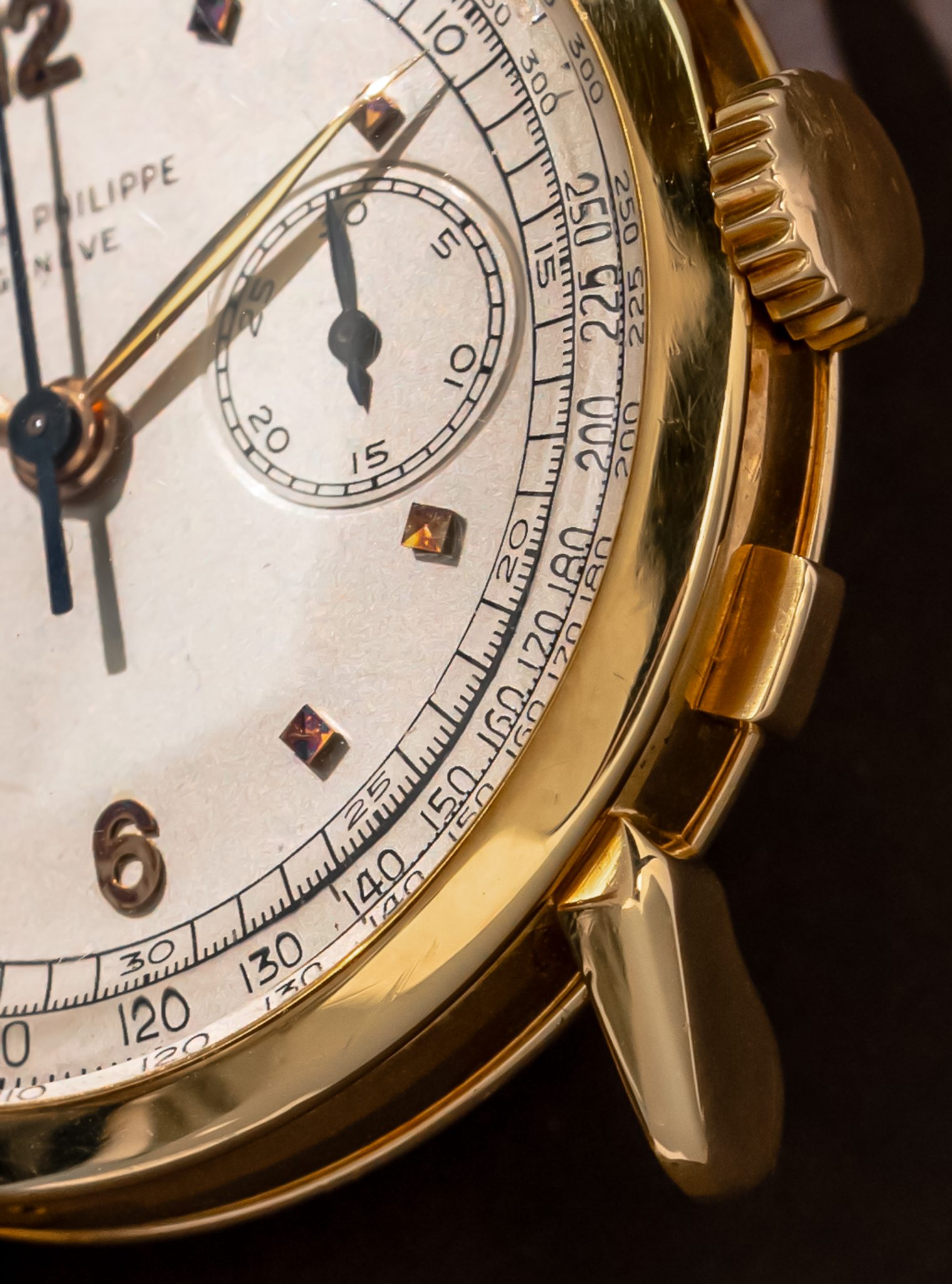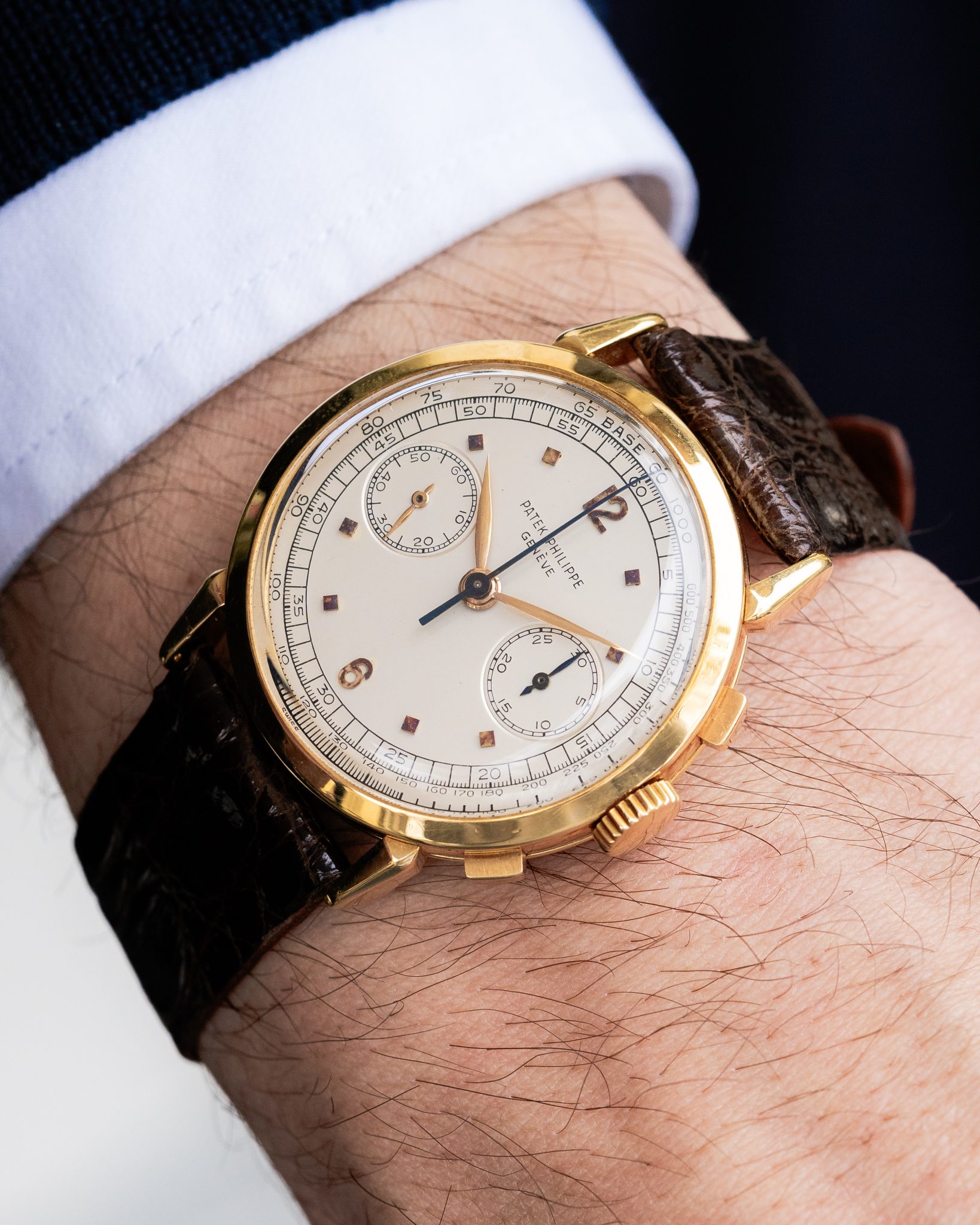
1579 ‘Spider Lug’ Patek Philippe Chronograph
Lug design counts for at least half of the way a watch wears, its importance cannot be overstated. Assuming a case is reasonably proportioned, which is a tall order for some brands, the lug makes or breaks it. In car design, brands carefully construct a wheel & tire package with a balanced harmony of width, offset, and camber in order to create what designers call ‘stance’. If it doesn’t sit right, it can’t be beautiful. Similarly, I can list innumerable watches, mostly from upstart microbrands, that look as fucked up as a GT3 on space savers because they didn’t nail the lug in some sense, whether proportion, shape, or angle. Characteristically, Patek considered all of this thoroughly before any of us were born. This is the ref. 1579 chronograph, nicknamed the ‘Spider Lug’, and it has whatever the watch equivalent of stance is in spades. It’s one of few cases, made by Wenger, that deserves the adjective sexy.


The 1579 was introduced in the middle of WWII and was a departure from every other Patek Philippe chronograph in both size and shape. As friend of Hairspring @kingflum recently pointed out, Patek continuing to make watches in the middle of the world ending, as if nothing is wrong, is quite an amusing mental image. At 36mm, it was the largest chronograph Patek had offered then, influenced by new aviator’s chronographs. The lugs are multi-bevelled, deep, just the right length, and aggressively downturned. But then its enamel dial also has some quite distinct touches like squared pyramid indices mixed with Arabics and blued steel chronograph hands (if you ever see one with a non-contrast chronograph hand, run). The size and design were wildly advanced for its time.
It was made in two series, the first until ’49 with baton indices and Roman numerals, then ’50-64 with these square pyramids and Arabics. All second series had feuille hands, first series mixed feuille and baton hands. It is thought that approximately 470 examples were made from 1943 until 1964, of which only 210 or so in total are thought to survive today. To date, roughly 90 are known in pink gold and 120 in this yellow.


So ahead of its time was the Spider Lug, in fact, that—and here’s your fun fact for the day—in 1989 Formula 1 driver Alessandro Nannini celebrated his first win at Suzuka by buying himself one in pink gold. We only know this because it sold at auction from his son. That one hammered at 142K USD, despite a Hausmann-signed dial the condition was less strong. Yellow gold will regularly hammer at auction between 60 and 150K depending on condition, like most vintage Patek any 1579 example is made in the details of condition. If you can find a winning example, on wrist, very little is as seductive.
This 1579 shows strong on condition. The cream tone dial is relatively spotless, perhaps cleaned, but not aggressively and still shows clear and clean printed text and scales. The signature is not too raised and none of the letters are blown out from sanding. The case has been polished lightly but retains clear and defined hallmarks with the original lug shape still well defined. It comes with an extract dating it to 1951, from a well-regarded Dubai retailer.











